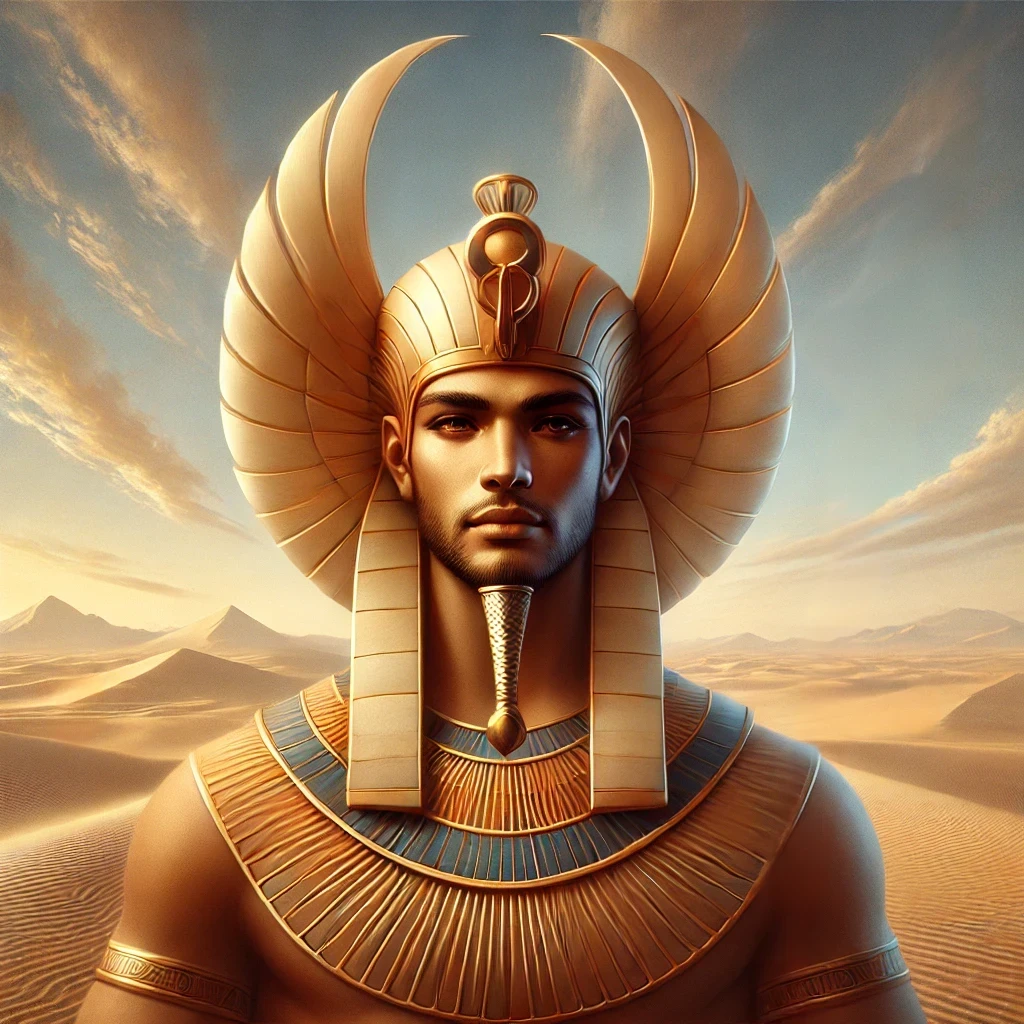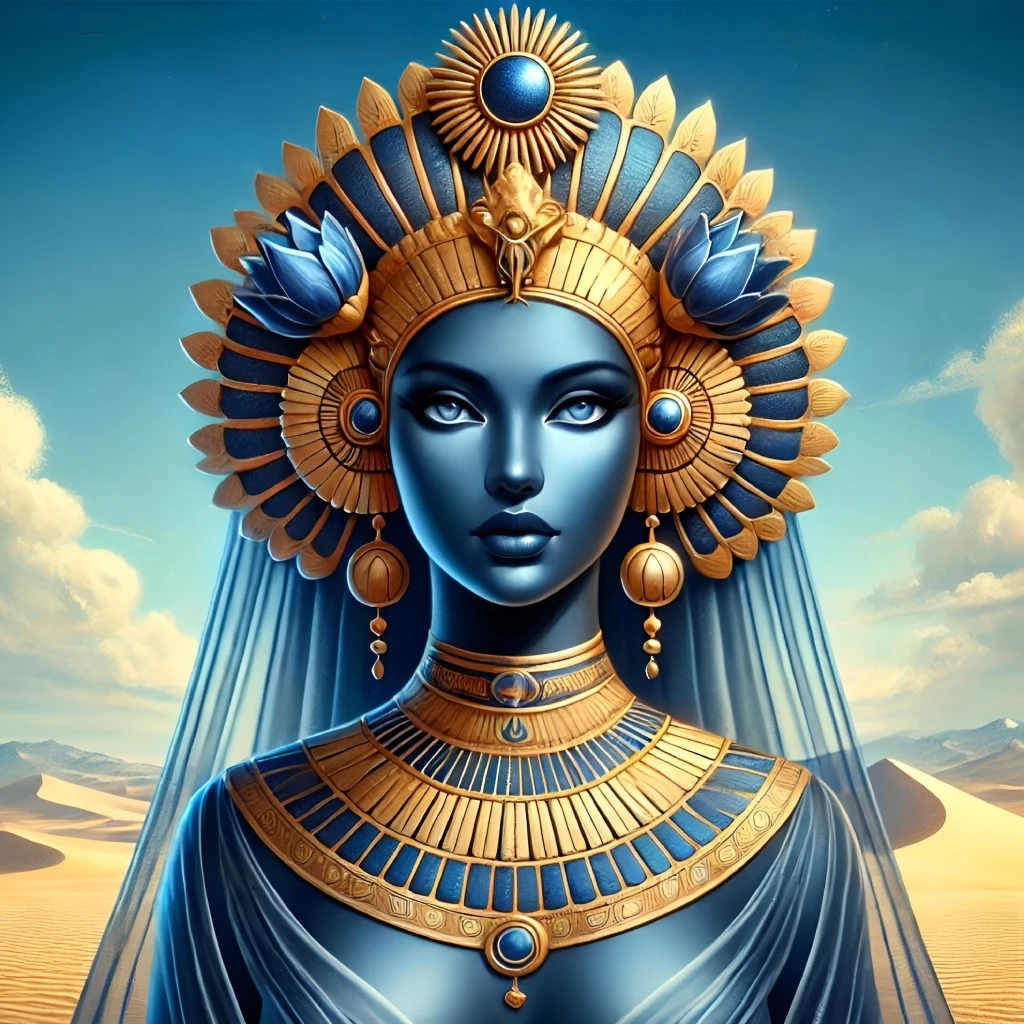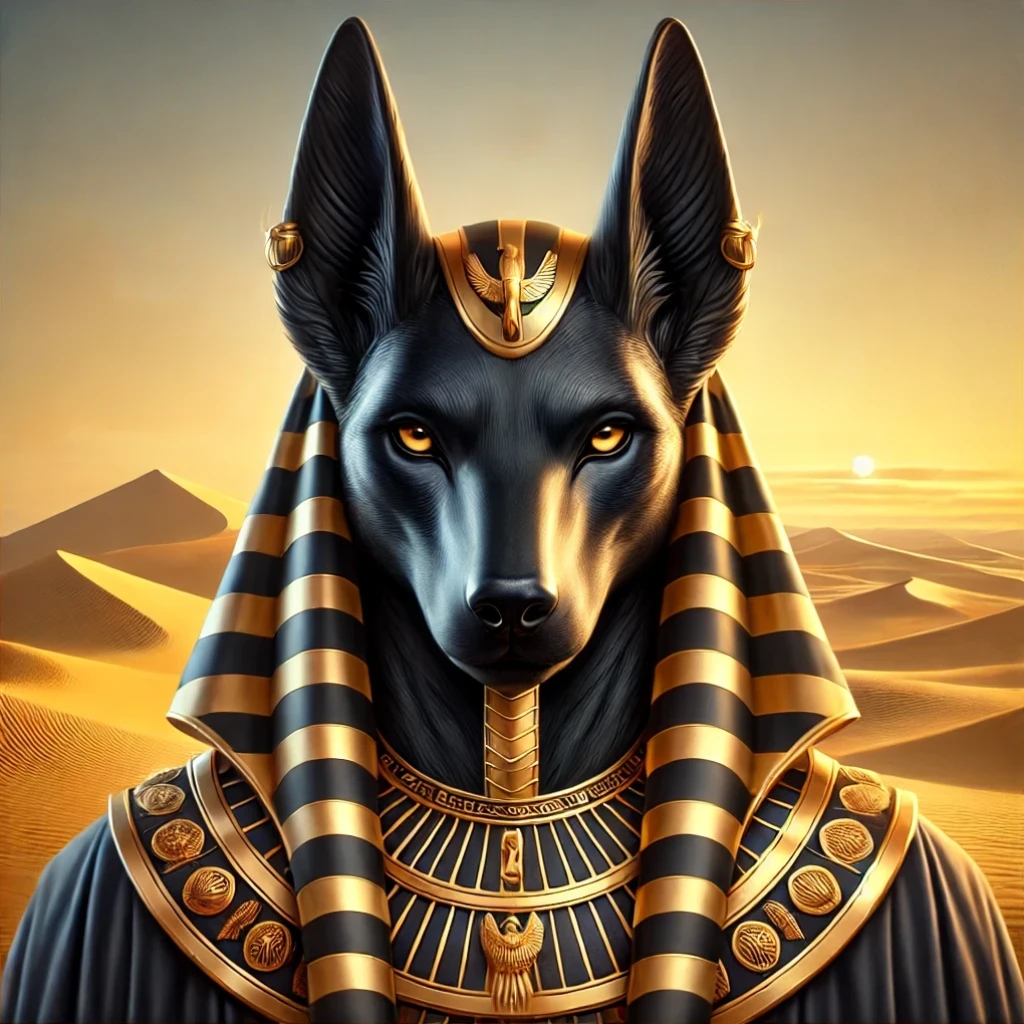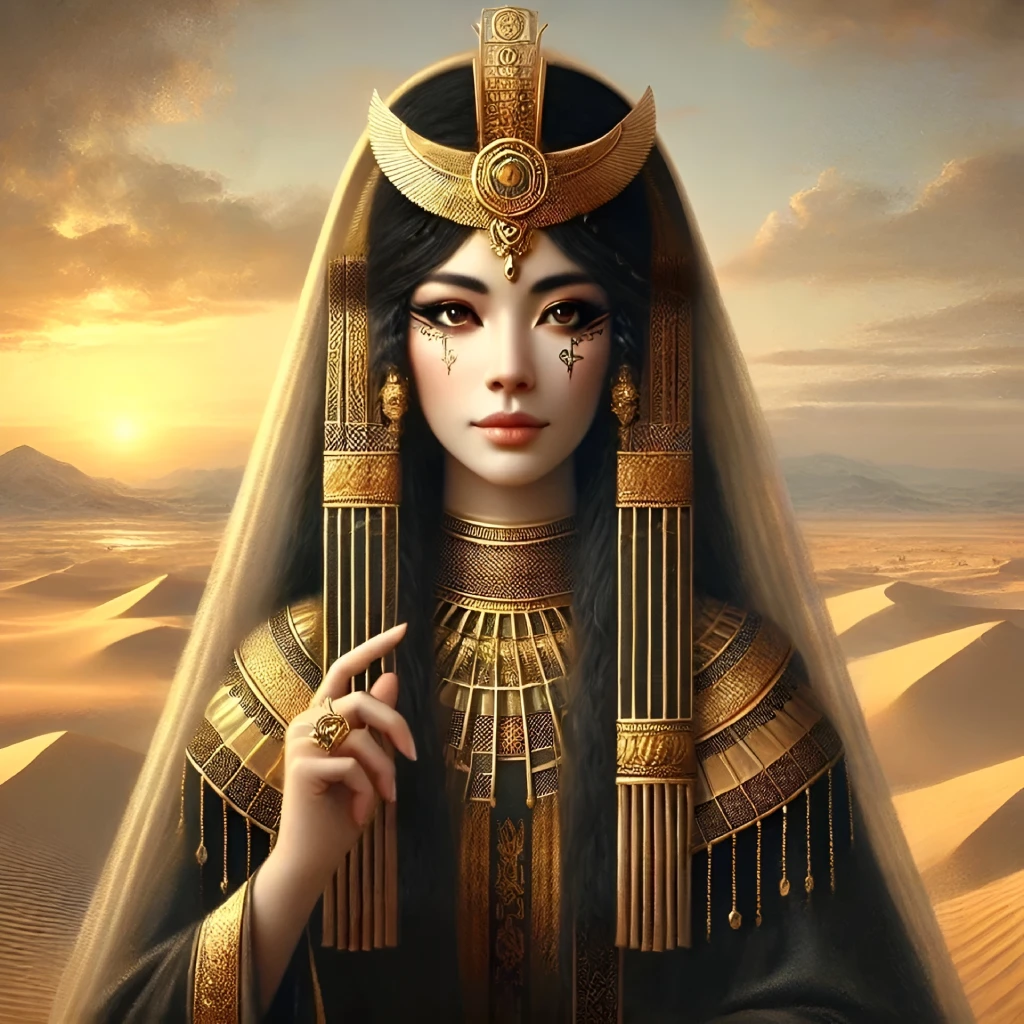The ancient Egyptian god known as Anhur was a deity of war, strength, and divine justice. His name, often translated as “Sky Bearer” or “Bringer Back the Distant One,” reflects his mythological role and his military significance. Depicted as a bearded man wearing a distinctive plumed headdress, he was closely associated with royal power and victory in battle. As a war god, he was revered for his ability to strike down enemies and maintain cosmic order. Epithets such as “Slayer of Enemies” and “Lord of Lances” underscore his martial prowess, while his role as a protective deity highlights his importance in Egyptian religious life. He was not only a battlefield guardian but also a figure of cosmic balance, ensuring that chaos did not overtake the structured order of existence. His veneration spanned centuries, marking him as one of Egypt’s enduring deities in times of both peace and war.
Origins
Early Mentions in Egyptian Texts
The earliest references to this war deity appear in texts from the Old Kingdom (c. 2686–2181 BCE), where Anhur is invoked as a protector of the pharaoh and a guardian of Egypt’s borders. His prominence increased in the Middle Kingdom (c. 2055–1650 BCE) when Egyptian military campaigns expanded and necessitated divine favor for battlefield success. By the time of the New Kingdom (c. 1550–1070 BCE), he had become integral to state-sponsored military theology, his name invoked in hymns and inscriptions that celebrated royal conquests.
Connection to Thinis and Abydos
Anhur was primarily worshiped in the Upper Egyptian city of Thinis, near Abydos, where he served as a local war deity before gaining prominence in the broader Egyptian pantheon. His connection to Abydos, a major religious center dedicated to Osiris, suggests a possible association with the afterlife, particularly in the protection of the righteous dead. His cult’s expansion beyond Thinis demonstrates his growing influence, and even in later periods, his presence in temple inscriptions attests to the persistence of his worship.
Syncretism with Other Deities
Over time, Anhur became associated with other gods, particularly Montu, another war deity, and Shu, the god of air. This blending of identities indicates a fluidity in Egyptian religious thought, where regional deities could merge to reflect evolving theological and political needs. His fusion with Montu, for instance, reflected the need for a powerful war god to symbolize military might, especially during Egypt’s imperial expansions. Similarly, his occasional identification with Shu reinforced his role as a divine force ensuring stability and order.
Appearance
Iconography in Art
Depictions of Anhur show him as a muscular man wearing a short kilt and a tall, double-feathered crown. He is often shown holding a spear or lance, symbolizing his role as a warrior and protector. In some depictions, he also carries a rope or net, an attribute that links him to myths of retrieval and divine intervention in restoring cosmic harmony.
Symbolic Elements in Imagery
His headdress, a defining characteristic, aligns him with deities associated with kingship and dominion. The lance further reinforces his function as a divine combatant, one who leads the charge against chaos and disorder. The feathered crown itself may symbolize his connection to sky deities, reinforcing his role in balancing celestial and earthly realms.
Variations Across Dynasties
Different periods of Egyptian history emphasized distinct aspects of his image. In New Kingdom art (c. 1550–1070 BCE), Anhur appears more frequently in dynamic battle scenes, reflecting the expansionist military campaigns of the time. Earlier representations, however, focus more on his priestly and protective attributes. Later periods sometimes depict him alongside Montu, highlighting his dual role as both an independent deity and a figure of merged worship traditions.
Abilities
Divine Warfare and Protection
Anhur was invoked as a god of war, offering protection to soldiers and ensuring victory in battle. His ability to vanquish enemies aligned him with the broader concept of ma’at (cosmic order) by eliminating forces that threatened Egyptian stability. Kings sought his favor before military campaigns, and his presence in temples suggested divine legitimacy for war efforts.
Control Over the Sky and Wind
Some traditions link him to the sky, an association likely derived from his headdress and his connection to Shu. This grants him dominion over the elements, reinforcing his status as both a warrior and a divine force maintaining balance in nature. His wind-related powers were sometimes invoked in prayers for favorable weather during military excursions.
Role as a Retrieving Deity
His title “Bringer Back the Distant One” suggests a mythological function in the return of lost gods or cosmic elements, a role that mirrors similar narratives involving deities like Thoth and Hathor. This ability to restore balance gave Anhur a broader purpose beyond battle, making him integral to myths of cosmic reconciliation.
Domain
God of War
As a martial deity, Anhur was responsible for ensuring Egypt’s military success. His presence in temple reliefs often depicts him leading the pharaoh into battle, symbolizing divine endorsement of military campaigns. His cult gained favor in times of military expansion, particularly during the reigns of warrior pharaohs.
Guardian of the Pharaoh
His role extended beyond battle; he served as a protector of the ruler, a role that made him a central figure in royal iconography. Kings often associated themselves with his strength to justify their conquests. Some pharaohs even adopted his epithets, signifying their alignment with his divine authority.
Cosmic Balance and Justice
While primarily a war god, Anhur also functioned as a guardian of order, striking down agents of chaos and reinforcing the divine right of Egyptian rule. His actions in myths often revolve around protecting the structure of the cosmos, aligning him with the broader Egyptian effort to maintain ma’at.
Myths
Battle Against Chaos
Although direct myths about Anhur are scarce, he is often linked to the larger Egyptian tradition of divine warriors battling chaos. Some texts suggest he participated in struggles against the enemies of Ra, reinforcing his role as a celestial guardian. His spear, frequently depicted in iconography, symbolizes this cosmic battle.
The Distant Goddess
In later interpretations, he is connected to the myth of the Distant Goddess, a story where he retrieves a wayward deity, often identified as Tefnut or Hathor, and restores balance to the cosmos. This narrative underscores his importance as a reconciler and restorer of divine order. It also emphasizes his role as a mediator, bridging conflicts among gods and mortals.
Symbolism
Weapons and Regalia
The spear or lance represents his warrior aspect, emphasizing Anhur’s role as a protector and conqueror. His feathered headdress signifies divinity and high status within the pantheon.
Animals and Sacred Beings
He was sometimes associated with lions, creatures emblematic of strength and kingship. Lions also served as guardians, reinforcing his role as a divine protector.
Colors and Materials
Red and gold, commonly used in his depictions, symbolized power, victory, and divine authority. Materials like bronze and gold were often linked to his representations in statuary and temple inscriptions.
Worship
Temple Cults
Major temples dedicated to Anhur existed in Thinis and later spread to other regions. These sanctuaries housed priests who performed rituals to invoke his strength and favor in battle. His statues were often found in military barracks and royal residences.
Festivals and Rituals
Annual ceremonies likely celebrated his martial prowess, with reenactments of divine combat. Pharaohs would offer sacrifices in his name before military campaigns. Some military victories were even attributed to his direct intervention.
Integration with State Religion
His worship was closely tied to the state’s military interests, making him an important figure in official religion during periods of conquest. Temples dedicated to him saw increased activity when Egypt sought expansion.
Associations
Connection to Montu
Both gods shared attributes of war and victory, often appearing together in inscriptions and hymns dedicated to Egyptian military triumphs.
Relationship with Shu
Due to similarities in iconography and mythology, some scholars suggest Anhur was at times equated with Shu, particularly in theological contexts involving air and cosmic balance.
Rivalry with Foreign Deities
As a war god, he was positioned in opposition to deities of enemy nations, reinforcing his role as a protector of Egypt against external threats.
Legacy
Decline in Worship
Anhur prominence waned after the New Kingdom as Egypt’s political landscape shifted and foreign rulers introduced their own deities. By the Greco-Roman period, he was largely absorbed into syncretic forms with Greek war gods.
Influence on Later Cultures
His attributes influenced later warrior archetypes in Egyptian mythology, and echoes of his worship can be seen in Hellenistic interpretations of Egyptian deities.
Archaeological Evidence
Remnants of temples, inscriptions, and military texts referencing him provide insights into his enduring significance in Egyptian history, even after his cult faded.
Trivia
- Greco-Roman Influence: Under Hellenistic rule, Anhur was syncretized with Ares, the Greek god of war, blending cultural interpretations of martial deities.
- Linguistic Legacy: The Greek name “Onuris” is a transliteration of his Egyptian name, preserving his legacy in Western records.
- Symbol of Unity: His mythological role as a retriever of Mehit symbolizes the reunification of Upper and Lower Egypt, a core theme in Egyptian statecraft.
- Festivals: Celebrations in his honor often included reenactments of his mythological exploits, particularly the retrieval of Mehit.
- Modern Recognition: Though not as widely recognized as other Egyptian gods, Anhur’s iconography and mythology continue to fascinate scholars and enthusiasts of ancient Egypt.
- Greek Connection: The Greeks equated him with Ares, their god of war, but unlike Ares, he was seen as a disciplined and noble warrior.
- Feathered Headdress: The four feathers in his headdress may have been inspired by the Meshwesh, a Libyan tribe, showing cultural exchange.
- God of Two Lands: His worship spread from Upper to Lower Egypt during the New Kingdom, reflecting Egypt’s political unification.
- Spear as Cosmic Symbol: His spear symbolized not just war but also cosmic order, piercing chaos like the sun’s rays.
- Rare Female Aspect: Some evidence suggests a female counterpart, Anhet, linked to hunting, though details remain scarce.
- Pharaoh’s Patron: Amenhotep II revered him, often depicting himself as a warrior under his protection.
- Temple in Sebennytos: Beyond his main cult center in This, a lesser-known temple existed in Sebennytos in the Nile Delta.
- Royal Legitimacy: Pharaohs used his imagery to legitimize their rule, especially during military campaigns.
- Name’s Hidden Meaning: His name, meaning “He Who Brings Back the Distant One,” also implies reconciliation and restoration.



